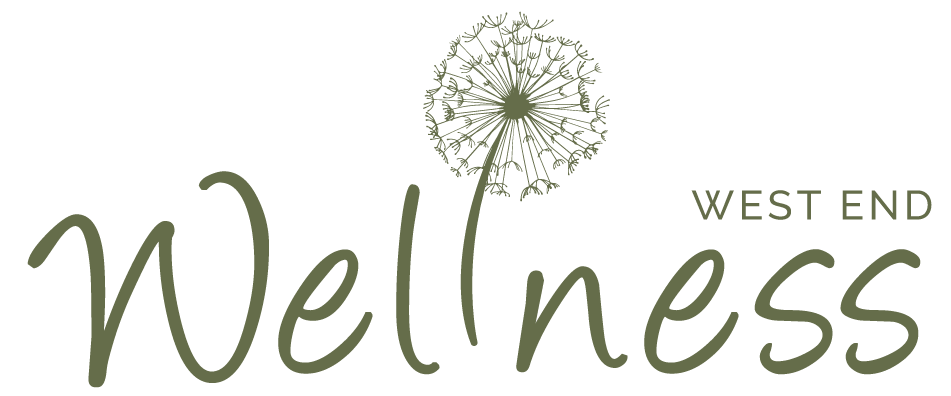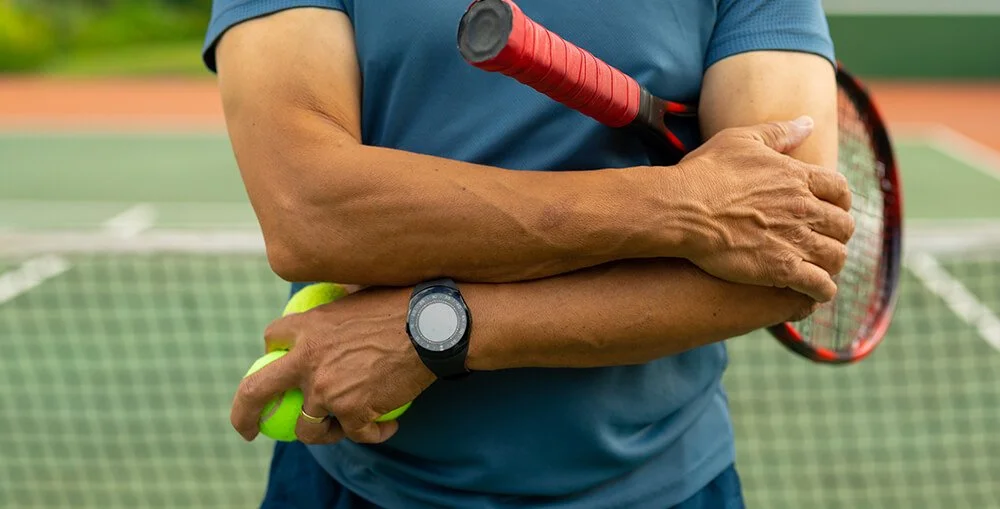Can Massage Therapy Treatment Help with Tennis Elbow?
Table of Contents Show
Quick Summary
This comprehensive guide explores tennis elbow, which can affect anyone engaging in repetitive arm movements, not just tennis players. We look into tennis elbow's signs, symptoms, and causes, helping you recognize early warning signs.
We discuss how massage therapy, including sports massage, deep tissue techniques, and cupping, can effectively alleviate symptoms and promote healing. We also provide practical self-care strategies for managing tennis elbow at home. By understanding this condition and learning about various treatment options, readers will be better equipped to maintain their arm health, whether they're sports enthusiasts or professionals whose work involves repetitive arm motions.
At West End Wellness, we understand that pain and discomfort can significantly impact your daily life, especially when it affects your ability to perform simple tasks or enjoy your favorite activities.
As the sun shines and our local courts fill up with enthusiasts, we see an uptick in tennis elbow cases. However, it's important to note that this condition can affect anyone who engages in repetitive arm movements, whether through sports, work, or hobbies.
Despite its name, this ailment isn't exclusive to tennis players, though it's particularly relevant in our community where tennis and new somewhat more popular cousin, pickleball, are frequently enjoyed in our beautiful Vancouver weather.
In this article, we'll want to explain what tennis elbow is, how to recognize its symptoms, and most importantly, how our expert massage therapy services can provide relief and promote healing.
As your partners in health and well-being, we're here to offer insight into this common condition and guide you towards effective treatment options.
Whether you're a weekend warrior on the courts, a dedicated professional, or simply someone looking to stay informed, this guide will provide valuable information to help you maintain optimal arm and elbow health so you can continue to enjoy this long loved sport.
Massage therapy post-workout significantly enhances recovery by reducing muscle soreness, improving circulation, and increasing flexibility.
What is a Tennis Elbow?
Tennis elbow, medically known as lateral epicondylitis, is a condition that some individuals may encounter, particularly those engaged in activities requiring repetitive arm movements.
This condition occurs when the tendons connecting the forearm muscles to the outer part of the elbow become irritated or develop small tears. The primary muscle involved is the extensor carpi radialis brevis (ECRB), which helps stabilize the wrist when the elbow is straight.
Despite its name, tennis elbow isn't limited to tennis players. It can affect anyone who performs repetitive motions with their arm and wrist. This could include individuals in various professions or hobbies, from office work to home improvement projects, and, yes, racquet sports enthusiasts enjoying Vancouver's outdoor courts.
While not everyone will experience tennis elbow, being aware of this condition can help you recognize early signs and seek appropriate care if needed.
Signs & Symptoms: How to Know if you have Tennis Elbow
While tennis elbow isn't extremely common, it's important to be aware of its signs and symptoms. If you experience any of the following, it may be worth discussing with a healthcare professional:
Pain or tenderness on the outside of your elbow
Discomfort that may extend into your forearm and wrist
Increased pain when gripping or lifting objects
Difficulty in fully extending your arm
Weakened grip strength
Stiffness in the elbow, especially in the morning
Remember, these symptoms can vary in intensity and may develop gradually over time.
What are the Main Causes?
Tennis elbow typically develops due to repetitive motions that strain the muscles and tendons around the elbow. Some activities that might contribute to this condition include:
Playing racquet sports (tennis, badminton, squash)
Painting or using tools like screwdrivers
Typing or extensive computer mouse use
Certain manual labor tasks (plumbing, carpentry)
Repetitive lifting or gripping activities
It's important to note that these activities don't necessarily lead to tennis elbow; the condition often results from a combination of factors.
What are the Risk Factors?
While anyone can potentially develop tennis elbow, certain factors may increase the likelihood:
Age: It's more common in adults between 30 and 50 years old
Occupation: Jobs involving repetitive arm motions may increase risk
Certain sports: Regular participation in racquet sports or other activities requiring repetitive arm movements
Duration of activity: Performing the same motion for extended periods without proper rest
Improper technique: Using incorrect form in sports or work activities
At West End Wellness, we believe in promoting overall arm and elbow health. There was also a study that showed that deep friction massage can be more effctive in treating tennis elbow, even more then those who have tried cortisone injections.
Understanding these risk factors can help you take proactive steps to maintain your well-being, whether you're an avid sports player or someone whose work involves repetitive arm movements.
How can Massage Therapy Help with Tennis Elbow?
Massage therapy can be an effective approach in managing and alleviating the symptoms of tennis elbow. Various massage techniques can help reduce pain, improve circulation, and promote healing by targeting the affected muscles and surrounding tissues.
Sports Massage
Sports massage is particularly beneficial for tennis elbow, especially for those who developed the condition through athletic activities. This technique focuses on:
Reducing muscle tension in the forearm and upper arm
Improving flexibility and range of motion in the elbow joint
Enhancing blood circulation to promote faster healing
Addressing any muscle imbalances that may contribute to the condition
A skilled massage therapist can incorporate stretching and mobility exercises into the session, helping to condition the overexerted muscle groups and prevent future strain.
Deep Tissue Massage
Deep tissue massage is a powerful technique for addressing tennis elbow. It works by:
Breaking down scar tissue that may have formed in the affected area
Releasing tension in the deep layers of muscles and connective tissues
Improving blood flow to accelerate the healing process
Reducing inflammation and pain in the elbow and forearm
During a deep tissue massage, the therapist may use friction therapy on the tendons along the elbow. This specific technique helps break down the overarching tension that often causes pain and tenderness associated with tennis elbow.
Cupping Therapy
Cupping is an alternative therapy that can complement traditional massage techniques in treating tennis elbow. This method involves:
Creating suction on the skin using special cups
Mobilizing the connective tissue around the wrist extensor muscles and tendons
Improving blood flow to the affected area
Reducing muscle tension and promoting relaxation
Myofascial cupping specifically targets the fascia - the connective tissue that wraps around muscles. By gently lifting and separating the fascia, cupping can help ease tension caused by overworked muscles in the forearm and elbow area.
tennis elbow can be treated so you can get back out on the court.
How to Soothe Tennis Elbow Symptoms
While professional treatment is often beneficial, there are several self-care strategies you can employ to help soothe tennis elbow symptoms:
Rest and activity modification: Give your arm adequate rest and avoid activities that exacerbate the pain.
Ice therapy: Apply ice to the affected area for 15-20 minutes every 2-3 hours to reduce inflammation and pain.
Compression: Use an elastic bandage to provide support and reduce swelling.
Stretching exercises: Gentle stretches can help improve flexibility and reduce tension in the forearm muscles.
Ergonomic adjustments: Ensure proper posture and ergonomics during daily activities to reduce strain on your arm.
Over-the-counter pain relievers: Non-steroidal anti-inflammatory drugs (NSAIDs) can help manage pain and inflammation.
Strengthening exercises: Once the acute pain subsides, gentle strengthening exercises can help prevent recurrence.
If your looking for more information, here we share a really good video from Dr.Jared that helps explain and shows you ways to help treat tenis elbow on his Tone & Tighten Youtube channel.
Conclusion
Tennis elbow, while uncomfortable, is a manageable condition. Early recognition of symptoms and prompt action can significantly improve outcomes.
Here are some key takeaways:
Listen to your body and avoid overexertion of your arm and wrist.
Incorporate regular stretching and strengthening exercises into your routine.
Pay attention to your technique in sports and daily activities to prevent undue stress on your elbow.
If symptoms persist or worsen, seek professional help. A combination of massage therapy and other treatments can be highly effective in managing tennis elbow.
Remember that healing takes time. Be patient with your body and consistent with your care routine.
By staying informed and proactive about your arm health, you can minimize the risk of developing tennis elbow and ensure swift recovery if it does occur.
Whether you're an athlete, office worker, or engaged in any activity involving repetitive arm movements, taking care of your elbows is crucial for maintaining an active and pain-free lifestyle.
If you have any further doubts or questions regarding this subject or another treatment, contact one of our experienced Acupuncturists or Registered Massage Therapists here at West End Wellness Clinic. You can either give us a call or make an appointment.
Disclaimer: Please remember this article is for informational purposes only and should not replace professional medical advice. Please consult a healthcare provider or someone with the correct qualifications before starting any new exercise or treatment program.




